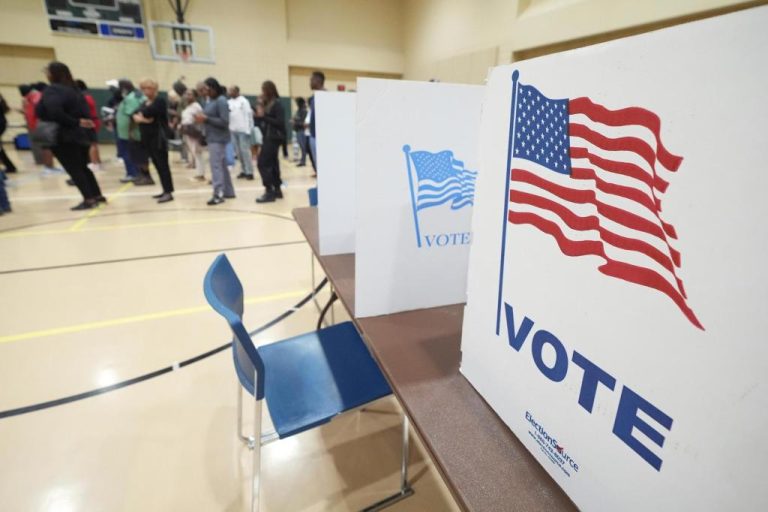

In the coming weeks, the San Diego City Council will consider an ordinance that would require demonstrators to ask permission before they interact with people visiting places of worship, schools and health care facilities, including those that provide abortions.
On Wednesday, the city’s public safety committee unanimously approved a proposal from City Attorney Mara Elliott that updates a 1997 addition to city code that created 100-foot “buffer zones” around those three types of venues.
The existing rules, Elliott explained, required anyone who felt harassed by demonstrators to tell them to get lost. Those given a verbal brush-off must withdraw “to a distance of at least 15 feet away from any entrance or exit” of the facility that their target is arriving at or departing from.
The city attorney argued that the status quo puts an “unreasonable burden” on those who are simply going about their business, requiring them to know that they have the right to request that protesters disperse.
“The proposed updates would shift that burden; harassing and intimidating behavior would be prohibited unless consent to that interaction is first obtained,” Elliott said.
If the council approves the proposed changes, behavior that a person feels is harassing or intimidating — including attempts to pass written material, display signs or “engage in oral protest, education or counsel” — would be forbidden within an 8-foot radius of anyone coming or going from a school, place of worship or health care facility. That no-go zone, the draft ordinance is careful to note, extends from a person in all directions whether or not they are inside a vehicle.
Changes would only be applicable for locations in the City of San Diego.
Anyone who felt their right to privacy under the updated ordinance had been violated could seek damages, as is the case under existing law, though the courts would be authorized to impose a fine of $2,500, more than double the $1,000 now allowed. Other damages, including court costs and attorney fees, can also be recovered.
Though the ordinance covers schools and churches, women’s health centers that provide abortions would clearly be the most directly affected as they have historically experienced the most persistent protest activity.
This is reflected in the 168 written comments submitted on the proposed ordinance and in the in-person and dial-in commentary made during the committee meeting.
Neal Ortiguerra, senior director of public affairs for Planned Parenthood of the Pacific Southwest, which operates eight women’s health centers in San Diego County, cited examples of demonstrators blocking facility driveways, sometimes walking back and forth to keep vehicles from entering and often accompanied by “small children or with strollers.”
Catherine Weeks, a San Diego resident who said she works as a greeter at the Planned Parenthood facility on First Avenue in San Diego’s Banker’s Hill neighborhood, said she has regularly been the focus of “hostile comments” from people asking her if she hates women and babies to being told she has blood on her hands.
These comments, she said, included a threat to a young woman who was told not to come out by the same way she entered, an impossibility because the clinic has only one entrance and exit. Disparaging comments were also made, she said, to a man accompanying his wife who had a health condition that “prevented her from continuing a pregnancy.”
“People are coming in for basic health care needs that are strictly between them and their health care provider, and they’re being judged, they’re being threatened and they’re being intimidated,” Weeks said.
But John Hargrove, a coordinator for 40 Days for Life, a program of the Catholic Diocese of San Diego, said that his organization’s activities are not about protest but rather protected exercise of religious beliefs.
Those who the program sends to centers holding signs with slogans such as “we will help you,” “ask us about a free ultrasound” and “ask us about post-abortion healing,” he said, come to clinics to pray for change.
“Is that causing serious distress? Are we tormenting the staff? Are we tormenting the clients? Are we guilty under this proposed language?” Hargrove asked.
Several speakers decried the ordinance’s definition of harassment, which would be any conduct “that alarms, seriously distresses, torments or terrorizes.”
Resident Roger Lopez predicted that such a broad definition, one that hinges on a person’s feelings, “will definitely be challenged in court.”
As written, he said, the ordinance should be seen as advocacy.
“This is essentially a heavy-handed legal and financial empowerment of Planned Parenthood to squash the First Amendment rights of peaceful sidewalk counselors who simply offer literature and advice to people in a public right-of-way,” Lopez said.
It was not clear Thursday when the the full City Council will consider the proposed amendments. A representative with the city attorney’s office said that two readings will be required for approval.






